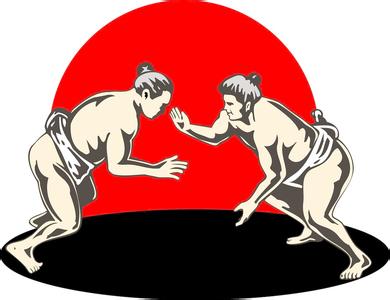
In the 1980’s, I was lucky enough to have trained in Okinawan Goju Ryu for a few years in Hereford. In that style is preserved the art of Okinawan wrestling. This art involves both fighters opposing one another in a deep horse-stance (with the weight firmly dropped and the feet rooted to the floor), whilst through grappling, trying to lift, throw or trip the opponent onto the ground (i.e. ‘up root’). The fight is over as soon as one of the fighters hits the floor. There is no run up (as in modern Sumo) as both fighters begin the encounter already in horse-stance and gripping one another’s clothing. I was told that this particular type of wrestling might well have originated in China. On the other hand, this wrestling could also have been an indigenous development on the Island of Okinawa, perhaps similar to the aboriginal wrestling found in Taiwan, or even Mongolian or Korean Wrestling. There is also a Manchurian form of wrestling originating in north-east China (that exists alongside a more general form of Chinese wrestling system). In Japan, Sumo wrestling is believed to have developed solely in Japan, and to have been a ritual contained within the ancient Shinto religion. Even Chinese language sources state this, but include the caveat that all forms of existing wrestling around China certainly share a number of key characteristics with the very old system of Chinese wrestling.
Some state that Sumo developed during the 12th century (the Northern and Southern Song Dynasty in China and the Heian and Kamakura Dynasties of Japan). However, Chinese sources record a much earlier date as being between 300 – 600 CE of the Kofun (古墳) Era. (In Chinese ‘古墳’ is pronounced ‘Gu Fen’ and literally translates as ‘Ancient Graves’). In the early 8th century, the book entitled the ‘Record of Ancient Matters’ (古事記 – Ko Ji Ki) was compiled, which recorded the far earlier myths and legends of Japan (prevalent during the Kofun Era). This stated that the elements of nature – such as thunder, wind and rain – all represented divine spirits that competed with one another in continuous trials of strength to bring balance to existence. This primordial trials of strength (referred to as ‘力競’ [Chin: Li Jing] or ‘power competitions’) are believed to be the philosophical origins of Sumo wrestling. From this basis, a martial art developed that involves horse-stance training, elaborate foot-work, the generation of tremendous force, evasion, pushing, slapping, palm-striking and head butting. This was developed by severe and arduous long-term training in various forms of body and mind conditioning, which involves pushing heavyweights, stretching and striking a wooden dummy. Over-time, the Sumo fighters stayed very fit, whilst eating rice and fish just before sleeping, and this led to the gaining of weight – believed to give the Sumo an advantage in combat. A large Sumo is considered ‘fit’ in Japan, as he manifests very much like a mountain, which is perceived as yet another force of nature. With men clashing at the higher levels at around 60 mph, Sumos must be strong and prepared to throw their opponent out of the designated circular area all Sumo fights happen within. Failing that, a Sumo can win by throwing their opponent to the floor, or by knock-out with an open hand, fore-arm or head-butt. Although each Sumo fight lasts only around 30 seconds, 10 or 15 minutes can be used in elaborate preparation and purification rituals. After retirement, many men who weighed 30 or 40 stone are put on special diets, and much of that weight is permanently lost.
Sumo, being an old name, is written in Chinese characters using the following ideograms ‘相撲’. The first character ‘相’ (xiang1) refers to something being experienced by two people – literally a shared experience – whilst the second character ‘撲’ (pu1) means to use an open hand to ‘pound’, ‘beat’ or ‘strike’. Sumo, it may be suggested, refers to an event whereby two participants strike one another. However, ‘相’ (xiang1) also refers to a unifying and underlying essence or substance that contains within it the complexity of existence, and ‘撲’ (pu1) literally refers to an open hand ‘pushing through’ a dense thicket, or an obstacle difficult to move or travel through. Sumo, therefore, can also mean a ‘trial of strength that reveals the unity of nature’. I prefer the latter translation, and believe this is nearer to how the Japanese people interpret Sumo wrestling.
©opyright: Adrian Chan-Wyles (ShiDaDao) 2017.
Chinese Language References:
https://zh.wikipedia.org/zh-hant/相撲
https://zh.wikipedia.org/wiki/古坟时代
English Language Reference: